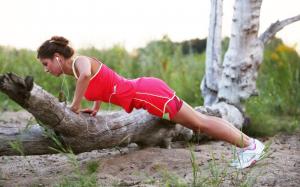This post is specifically for my campers in the Tue/Thur session 1 of bootcamp, but if you’re interested in calorie consumption, feel free to read on!
Nutrition is SO complicated! It’s frustrating as a fitness professional to see so many ‘diets’, trends, fads. High protein. Low protein. High fat. All vegetables. All fruit. What???? Throw all of those ideas away. Now. THIS ISN’T A DIET. THIS IS LIFE. You want to be healthy, like forever, right? Not just for 6 weeks or until your pants fit better. Right? It’s hard a first, but eating well just needs to be a part of your life to be healthy, have energy, and look good. Period.
Sure, let’s call it a diet at first. Because at first there are no cheat days, no just a little here and there of something bad. It’s clean, 100% of the time. You have a goal, somewhere you want to get to physically. When you get closer, then you can modify your program to the point that it matches real life (i.e. a day a week to have drinks with your girls, a night out with hubby, a few slices of pizza during the Sunday game).
So, what’s the program? First you need to know how many calories to eat. And then you need to track what you eat by writing things down (people using food journals are 30% more likely to eat the right foods!). It will be time consuming at first, and tedious, but it will get much easier and eventually you won’t have to write anything down because you will just have a very good idea of what is going in your body.
THIS IS HOW MANY CALORIES YOU NEED:
Step 1. Calculate your resting metabolic rate (RMR) — Body weight x 10 = RMR
Step 2. Calculate daily activity burn– RMR x 20% = Daily Activity Burn
Step 3. Add calories required for exercise — 300 on days we workout together and you give it your all. Same goes for hour long workouts on all other days, if you are working HARD
Step 4. Add all of these numbers up to equal your daily calories needed
**The only caveat here is if you are starting well overweight, in that case for step 1 use your desired weight instead of your current weight to create the calorie deficit you need.
Remember, 3500 calories is 1 pound of fat, so that’s a 500 calorie a day change you need to make to lose 1 pound a week — through burning 500 calories with exercise or eating 500 calories less than you currently are. OR BOTH! AND THEN YOU CAN LOSE 2LB OF FAT PER WEEK!
How about food?
I don’t think you really need me to tell you what not to eat. We all know what’s good and what’s not. Don’t eat junk. No processed foods. No white anything. RIGHT NOW, go to your pantry and throw all that crap away! No one in your house needs that, not even your kids! Eat green things, colorful things, lots of lean protein, only a little dairy if any (and it MUST be low/non-fat), and try to keep your grains between 200 and 300 calories a day (that’s 1 -1.5 cups). But they need to be good grains – brown or black rice, quinoa, lentils, beans, amaranth, bulgar, whole wheat bread if you need bread. Make sure every meal has protein in it.
And here’s the other important part, eat 5 times a day! Take that caloric number you found you need and figure out about how many you want during each part of your day. Sometimes I eat a ton in the morning. Sometimes I have a huge lunch and don’t do much for dinner. But I always make sure I have snacks and hit my caloric number for the day because ONCE YOU ARE HUNGRY IT IS TOO LATE. Like, really hungry. Don’t let yourself ever get really hungry, that’s a bad thing for your metabolism. Keep it moving fast by always fueling it. Don’t under-eat. Bad move. Being hungry makes you crave all sorts of bad things for all sorts of scientific reasons. Not important for you to understand, unless you want to, but point is, don’t get crazy hungry. Eat if you want to, but eat GOOD things!
Questions? Let me know!






